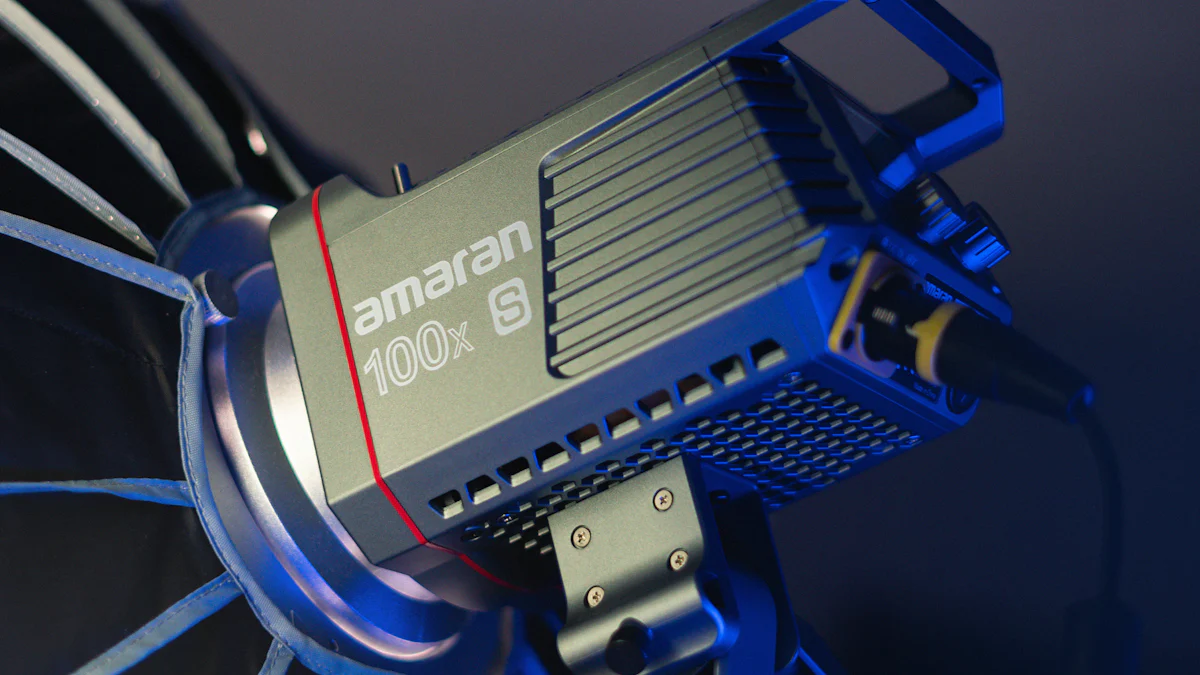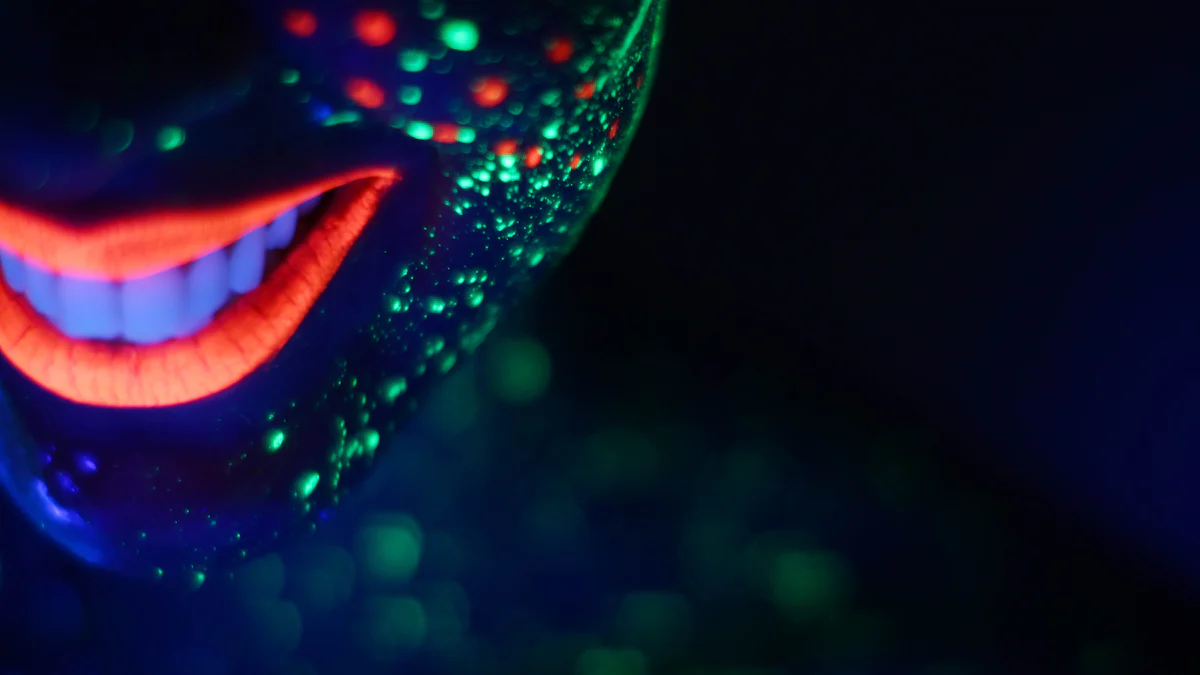
Les plateaux SiC LED UV représentent une avancée révolutionnaire dans les applications de diodes électroluminescentes et la fabrication de semi-conducteurs. La technologie LED UV émet la lumière ultraviolette avec précision et efficacité, ce qui la rend essentielle pour les industries comme la désinfection et le durcissement. Les plateaux en carbure de silicium (SiC) sont conçus pour la durabilité et une résistance à la chaleur exceptionnelle, offrant une haute conductivité thermique et une résistance à l'abrasion. L'intégration de plateaux UV LED SiC crée une solution puissante, répondant aux besoins industriels critiques avec une fiabilité et des performances inégalées.
Principaux enseignements
- La technologie UV LED offre une grande efficacité, un design compact et une longue durée de vie, ce qui en fait une alternative durable aux sources lumineuses UV traditionnelles.
Les plateaux SiC offrent une durabilité et une stabilité thermique exceptionnelles, ce qui les rend idéales pour des applications de haute performance dans la fabrication de semi-conducteurs et les processus à haute température.
- La combinaison de LED UV et de plateaux SiC améliore les processus industriels en fournissant des émissions de lumière précises et une gestion de la chaleur supérieure, améliorant la productivité et la fiabilité.
- Les industries peuvent réaliser des économies importantes avec les LED UV en raison de leur consommation d'énergie réduite et de leurs besoins d'entretien réduits.
- Tant les LED UV que les plateaux SiC soutiennent les objectifs de durabilité en minimisant les déchets et en évitant les matières dangereuses, contribuant à des pratiques industrielles respectueuses de l'environnement.
Les applications des plateaux UV LED SiC couvrent la désinfection, le séchage et la fabrication de semi-conducteurs, montrant leur polyvalence et leur efficacité dans divers secteurs.
Comprendre les LED UV Technologie

La technologie UV LED a révolutionné la façon dont les industries utilisent la lumière ultraviolette. En émettant de la lumière UV à travers des diodes électroluminescentes, cette technologie offre une précision, une efficacité et une polyvalence dans différentes applications. Sa capacité à remplacer les lampes au mercure traditionnelles l'a positionnée comme une solution durable et novatrice dans les industries modernes.
Principales caractéristiques des LED UV
Les LED UV se distinguent par leurs caractéristiques uniques, qui les rendent indispensables dans de nombreux domaines:
- Haute efficacité: Les LED UV offrent une efficacité énergétique exceptionnelle par rapport aux sources lumineuses UV classiques. Ils consomment moins d'énergie tout en maintenant des niveaux de sortie élevés.
- Conception compacte: Ces LED sont petites et légères, permettant une intégration transparente dans les appareils et les systèmes. Leur nature compacte améliore la portabilité et la flexibilité de conception.
- Long Lifespan: Les LED UV ont une durée de vie significativement plus longue que les lampes UV traditionnelles. Cela réduit les coûts d'entretien et assure une performance constante au fil du temps.
- Précision de longueur d'onde: Les LED UV peuvent émettre de la lumière à des longueurs d'onde spécifiques, telles que 265 nm pour les LED UV-C. Cette précision les rend idéales pour des applications ciblées comme la désinfection et le traitement.
- Avantages pour l'environnement: Contrairement aux lampes au mercure, les LED UV ne contiennent pas de matières dangereuses. Cela les rend plus sûrs pour l'environnement et plus faciles à éliminer de manière responsable.
Avantages des LED UV
Les avantages de la technologie UV LED s'étendent au-delà de ses caractéristiques, offrant des avantages tangibles aux industries comme aux consommateurs:
- Économies: Les LED UV réduisent les coûts de fonctionnement en consommant moins d'énergie et nécessitent un entretien minimal. Leur longue durée de vie contribue en outre à la rentabilité.
- Enhanced Performance: Les industries bénéficient de la haute performance et de la fiabilité des LED UV. Les applications comme le durcissement UV obtiennent des résultats plus rapides et plus cohérents, améliorant la productivité.
- Versatility: Les LED UV répondent à un large éventail d'applications, y compris la désinfection, l'impression et la fabrication de semi-conducteurs. Leur capacité d'adaptation en fait un choix privilégié dans tous les secteurs.
- Sécurité et durabilité: L ' absence de mercure et la réduction de la consommation d ' énergie sont conformes aux efforts déployés au niveau mondial pour promouvoir la durabilité. Les LED UV offrent une alternative plus sûre pour les utilisateurs et l'environnement.
- Gestion de la chaleur: Les LED UV génèrent moins de chaleur que les sources UV traditionnelles. Cette fonctionnalité permet leur utilisation dans les matériaux et les procédés sensibles à la chaleur, en élargissant leur champ d'application.
For example, LED UV-C ont gagné en importance pour leur capacité à inactiver les agents pathogènes, y compris les virus. Leur taille compacte et leur grande efficacité leur permettent de s'intégrer aux dispositifs médicaux et aux solutions de santé publique. De même, Cure à DEL UV a transformé les processus d'impression et d'assemblage électronique en réduisant la consommation d'énergie et en améliorant les capacités du système.
L'intégration de la technologie LED UV avec Plateaus SiC amplifie encore ses avantages. Ensemble, ils créent des solutions robustes pour les industries exigeant précision, durabilité et résistance à la chaleur. Cette combinaison illustre le potentiel des plateaux UV LED SiC pour faire progresser l'efficacité et la durabilité industrielles.
Explorer les bacs SiC
Les plateaux en carbure de silicium (SiC) sont apparus comme une pierre angulaire dans les industries nécessitant des matériaux de haute performance. Ces plateaux, fabriqués à partir de carbure de silicium, présentent une durabilité et une stabilité thermique exceptionnelles, ce qui les rend indispensables dans des environnements exigeants tels que la fabrication de semi-conducteurs et les processus à haute température.
Propriétés de SiC Trays
Les plateaux SiC possèdent un ensemble unique de propriétés qui les distinguent des autres matériaux. Ces caractéristiques permettent leur utilisation généralisée dans les applications industrielles avancées:
- High Thermal Conductivity: Les plateaux SiC dissipent efficacement la chaleur, assurant une performance stable même aux températures extrêmes. Cette propriété les rend idéales pour des applications telles que le traitement des wafers et les procédés MOCVD (Dépôt de vapeur chimique méta-organique).
- Exceptional Hardness: Le carbure de silicone se classe parmi les matériaux céramiques les plus difficiles. Cette dureté offre une résistance supérieure à l'usure et aux contraintes mécaniques, prolongeant la durée de vie des plateaux.
- Chemical Resistance: Les plateaux SiC résistent à la corrosion et à l'oxydation, même lorsqu'ils sont exposés à des produits chimiques difficiles ou à des environnements à haute température. Cela garantit des performances cohérentes dans la fabrication de semi-conducteurs et d'autres processus critiques.
- High Purity: La pureté du matériau minimise les risques de contamination, ce qui est crucial dans les industries comme l'électronique et le photovoltaïque.
- Structure légère: Malgré leur robustesse, les plateaux SiC restent légers, facilitant ainsi la manipulation et l'intégration des équipements.
Par exemple, Substrats de graphite revêtus de SiC combiner un revêtement en carbure de silicium avec une base en graphite pour améliorer la stabilité thermique et la résistance à l'oxydation. Ces substrats sont excellents dans les environnements à haute température, comme ceux rencontrés dans le traitement des semi-conducteurs.
Avantages des bacs SiC
Les avantages des plateaux SiC vont au-delà de leurs propriétés intrinsèques, offrant des avantages tangibles qui améliorent l'efficacité opérationnelle et la fiabilité :
- Durabilité: Les plateaux SiC résistent à une exposition prolongée à des températures élevées et à des contraintes mécaniques sans dégradation. Cette durabilité réduit les coûts de remplacement et de maintenance.
- Enhanced Performance: Leur capacité à fonctionner à des tensions et des fréquences plus élevées, couplée à une gestion thermique supérieure, assure une performance optimale dans les applications haute puissance et haute fréquence.
- Versatility: Les plateaux SiC supportent une large gamme d'applications, du transport du substrat LED au traitement des plaquettes. Leur capacité d'adaptation en fait un choix privilégié dans plusieurs secteurs.
- Cost-Effectiveness: La longue durée de vie et les besoins d'entretien réduits des plateaux SiC contribuent à réduire les coûts opérationnels au fil du temps.
- Avantages pour l'environnement: La haute pureté et la résistance chimique des plateaux SiC minimisent les déchets et la contamination, en adéquation avec les objectifs de durabilité dans les industries modernes.
For example, Haute pureté 99.9% SiC Bacs sont spécialement conçus pour la fabrication de semi-conducteurs. Leur dureté exceptionnelle et leur résistance chimique leur permettent de transporter des substrats LED et d'autres composants délicats.
L'intégration des plateaux SiC avec la technologie UV LED amplifie encore leur utilité. Ensemble, ils forment une solution robuste pour les industries exigeant précision, résistance à la chaleur et durabilité. Cette synergie met en évidence le potentiel de transformation UV LED SiC trays dans les processus industriels.
Applications des bacs SiC LED UV

Applications des LED UV
La technologie UV LED a transformé de nombreuses industries en offrant des solutions de lumière ultraviolette efficaces et précises. Ses applications couvrent différents domaines :
- Désinfection et stérilisation: LED UV inactivent efficacement les bactéries, virus et autres pathogènes. Leur taille compacte et leur précision de longueur d'onde les rendent idéales pour les appareils médicaux, les purificateurs d'air et les systèmes de traitement de l'eau.
- Hydratant UV: Les industries comme l'impression, l'électronique et la fabrication de polymères dépendent des LED UV pour les processus de durcissement. Ces LED réduisent la consommation d'énergie, réduisent les températures de surface et éliminent le besoin de systèmes d'échappement d'air, améliorant ainsi l'efficacité opérationnelle.
- Systèmes optoélectroniques: Les LED UV servent de sources de déclenchement dans les systèmes optoélectroniques, permettant des sorties numériques et analogiques pour capturer des images à portée UV. Cette application est particulièrement utile dans la recherche scientifique et les technologies d'imagerie.
- Semiconductor Manufacturing: Les LED UV jouent un rôle crucial dans la photolithographie et le traitement des plaquettes. Leur capacité à émettre de la lumière à des longueurs d'onde spécifiques assure la précision de ces processus de haute technologie.
Par exemple, les LED UV-C ont gagné en importance pour leur capacité à désinfecter les surfaces et l'air, contribuant de façon significative aux progrès de la santé publique.
Applications des bacs SiC
Les plateaux en carbure de silicium sont indispensables dans les industries exigeant des matériaux avec une durabilité et une stabilité thermique exceptionnelles. Leurs demandes comprennent :
- Fabrication de semi-conducteurs: Les plateaux SiC sont largement utilisés dans des processus comme la gravure ICP et le transport de plaquettes. Leur dureté élevée, leur résistance à l'abrasion et leur conductivité thermique garantissent la fiabilité de ces environnements exigeants.
- LED Substrat Convoyance: Les plateaux SiC excellent dans l'équipement de transport pour le transport des substrats LED. Leur résistance chimique et leur structure légère améliorent l'efficacité et réduisent les risques de contamination.
- Processus à haute température: Des industries telles que la métallurgie et le photovoltaïque utilisent des plateaux SiC pour leur capacité à supporter des températures extrêmes sans dégradation.
- Revêtements avancés: Les substrats de graphite revêtus de SiC combinent les avantages du carbure de silicium et du graphite. Ces substrats offrent une stabilité thermique et une résistance à l'oxydation accrues, ce qui les rend adaptés aux applications à haute température.
Par exemple, haute pureté 99.9% Les plateaux SiC sont spécialement conçus pour la fabrication de semi-conducteurs, assurant une contamination minimale et une performance optimale.
Applications combinées de LED UV et de bacs SiC
L'intégration de la technologie UV LED avec les plateaux SiC crée une synergie puissante, répondant aux besoins industriels critiques avec une précision et une durabilité inégalées. Les applications combinées comprennent :
- Wafer Processing: Les LED UV et les plateaux SiC travaillent ensemble dans les systèmes de traitement des plaquettes. Les LED UV fournissent des émissions de lumière précises, tandis que les plateaux SiC assurent une gestion thermique stable et un support de substrat.
- LED Industrie manufacturière: La combinaison améliore l'efficacité des lignes de production LED. Les LED UV facilitent les processus de durcissement, et les plateaux SiC offrent un support fiable, réduisant les temps d'arrêt et améliorant la qualité de sortie.
- Photovoltaïque Industrie: Les plateaux UV LED SiC contribuent à la production de cellules solaires en soutenant les processus à haute température et en assurant l'uniformité dans la manipulation des matériaux.
- Stérilisation des instruments médicaux: LED UV intégrées avec des plateaux SiC permettent une stérilisation efficace des instruments médicaux. La résistance chimique et la stabilité thermique des plateaux complètent les capacités de désinfection des LED UV.
Par exemple, les plateaux UV LED SiC ont fait leurs preuves dans la fabrication de semi-conducteurs, où la précision, la résistance à la chaleur et la durabilité sont primordiales. Cette combinaison illustre le potentiel des matériaux avancés pour stimuler l'innovation industrielle.
Les plateaux UV LED et SiC présentent des caractéristiques uniques qui redéfinissent l'efficacité et la fiabilité industrielles. La technologie LED UV offre une précision, des économies d'énergie et des avantages environnementaux, tandis que les plateaux SiC offrent une durabilité inégalée, une stabilité thermique et une résistance chimique. Ensemble, ils abordent des défis critiques dans des industries comme la fabrication de semi-conducteurs, la désinfection et les procédés à haute température. Leurs applications combinées améliorent la productivité, réduisent les coûts et soutiennent les objectifs de durabilité. À mesure que les industries évoluent, l'importance croissante de ces matériaux avancés souligne leur rôle dans l'innovation technologique et la satisfaction des exigences industrielles modernes.
FAQ
Quels sont les avantages environnementaux du durcissement UV LED?
Le séchage UV LED offre des avantages environnementaux importants. Il réduit la consommation d'énergie jusqu'à 85%, comme indiqué par les utilisateurs de systèmes LED UV. Contrairement aux lampes au mercure traditionnelles, les LED UV ne contiennent pas de matières dangereuses, ce qui en fait un choix plus sûr et plus durable. Cette technologie s'harmonise avec les efforts déployés au niveau mondial pour minimiser l'impact environnemental tout en améliorant l'efficacité industrielle.
Pourquoi l'accent est-il mis sur le développement de LED qui émettent en dessous de 365 nm?
Le développement de LED émettant moins de 365 nm répond à des besoins critiques dans des industries comme la purification de l'air et de l'eau, la désinfection des aliments et les applications biomédicales. Ces LED offrent une alternative supérieure aux lampes au mercure, offrant précision et efficacité. Leur capacité à cibler des longueurs d'onde spécifiques améliore leur efficacité dans la stérilisation et d'autres processus spécialisés.
Comment la technologie LED UV-C contribue-t-elle à la santé publique?
Les LED UV-C jouent un rôle central dans la santé publique en inactivant les agents pathogènes, y compris les bactéries et les virus. Leur taille compacte et leur grande efficacité les rendent idéales pour l'intégration dans les dispositifs médicaux, les purificateurs d'air et les systèmes de traitement de l'eau. Par exemple, Stanley Electric a développé des LED UV-C avec une production et une efficacité de pointe de l'industrie, assurant des performances fiables dans les applications de désinfection.
Qu'est-ce qui rend les plateaux SiC adaptés à la fabrication de semi-conducteurs?
Les plateaux SiC excellent dans la fabrication de semi-conducteurs en raison de leur high thermal conductivity, dureté exceptionnelle et résistance chimique. Ces propriétés assurent une performance stable dans les environnements à haute température et réduisent les risques de contamination. Leur structure légère facilite également la manipulation, ce qui les rend indispensables dans des processus tels que le transport de plaquettes et la gravure du PIC.
Les plateaux UV LED et SiC peuvent-ils être utilisés ensemble dans des applications industrielles?
Oui, la combinaison de la technologie UV LED et des plateaux SiC crée une solution robuste pour les industries exigeant précision et durabilité. Dans le traitement des plaquettes, les LED UV fournissent une émission lumineuse précise, tandis que les plateaux SiC assurent une gestion thermique efficace. Cette synergie améliore la productivité et la fiabilité dans des environnements exigeants comme la fabrication de semi-conducteurs et de LED.
Comment les LED UV se comparent-elles aux lampes au mercure traditionnelles?
Les LED UV surpassent les lampes au mercure de plusieurs façons. Ils consomment moins d'énergie, ont une durée de vie plus longue et ne contiennent pas de matières dangereuses. De plus, les LED UV offrent une précision de longueur d'onde, permettant des applications ciblées telles que la désinfection et le durcissement. Ces avantages font des LED UV un choix plus durable et rentable pour les industries modernes.
Quelles industries bénéficient le plus des plateaux SiC?
Les plateaux SiC sont largement utilisés dans des industries comme la fabrication de semi-conducteurs, le photovoltaïque et la métallurgie. Leur capacité à résister aux températures extrêmes et à la corrosion chimique les rend idéales pour les processus à haute température. Ils jouent également un rôle crucial dans le transport des substrats LED, assurant une contamination minimale et une performance optimale.
Les systèmes LED UV sont-ils rentables?
Les systèmes LED UV offrent d'excellentes économies au fil du temps. Leur efficacité énergétique réduit les coûts d'exploitation, tandis que leur longue durée de vie minimise les dépenses d'entretien. Les industries utilisant des systèmes de séchage UV LED ont signalé des réductions importantes de la consommation d'énergie, faisant de cette technologie une solution rentable pour diverses applications.
Quel rôle jouent les plateaux UV LED SiC dans l'industrie photovoltaïque ?
Les plateaux UV LED SiC contribuent à l'industrie photovoltaïque en soutenant les processus à haute température impliqués dans la production de cellules solaires. Les plateaux SiC assurent une manipulation uniforme des matériaux, tandis que les LED UV améliorent la précision dans les processus de séchage et de désinfection. Cette combinaison améliore l'efficacité et soutient les objectifs de durabilité dans la production d'énergie renouvelable.
Comment les LED UV et les plateaux SiC soutiennent-ils les objectifs de durabilité?
Les LED UV et les plateaux SiC s'harmonisent avec les objectifs de durabilité en réduisant la consommation d'énergie et en minimisant les déchets. Les LED UV éliminent le besoin de mercure dangereux, tandis que les plateaux SiC offrent une longue durée de vie et une pureté élevée, réduisant les risques de contamination. Ensemble, ils offrent des solutions écologiques qui améliorent l'efficacité industrielle et la responsabilité environnementale.